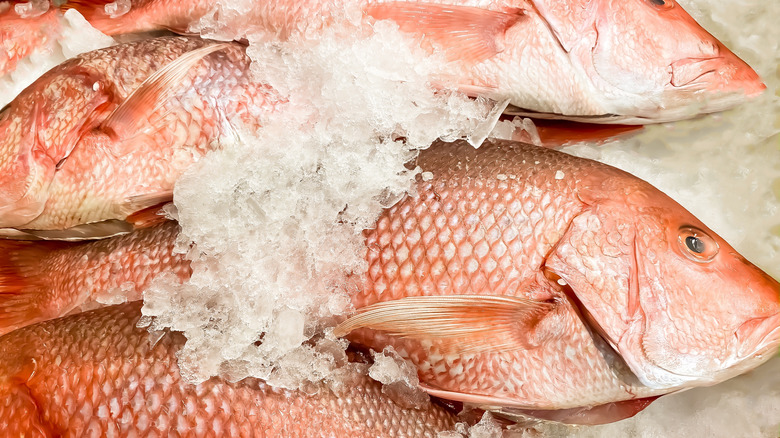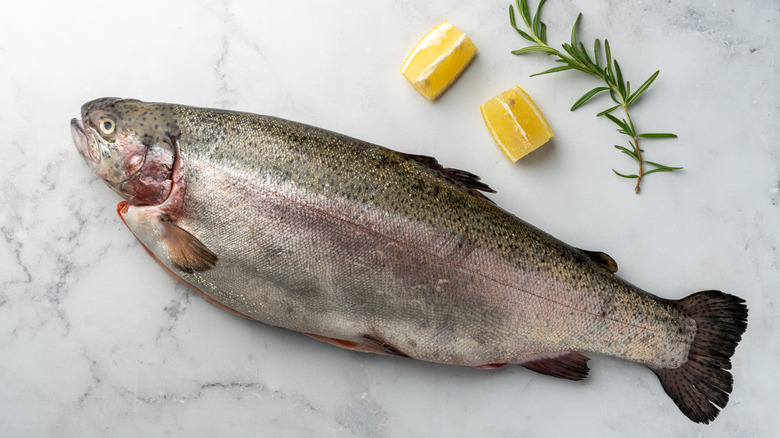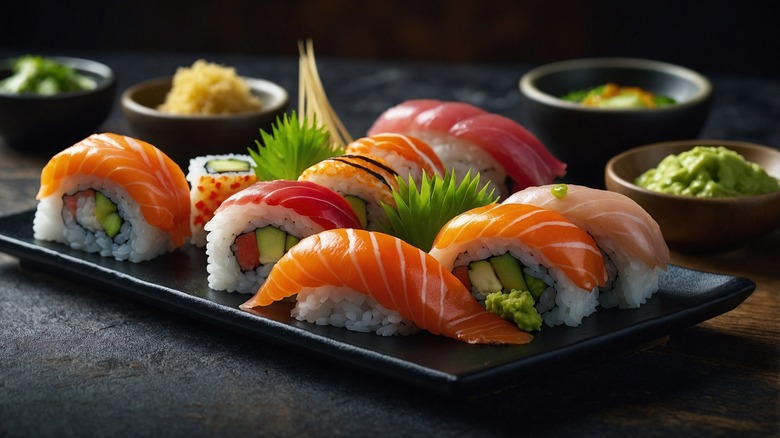Choose The Freshest Fish At The Store With A Simple Sniff Test
When it comes to fish — specifically how we source fish — freshness is always at the very top of the list. After all, fish is at its best right when it comes out of the sea, and it's all downhill from there. Shopping for the freshest whole fish at the store shouldn't be a headache, and if you find the prospect of picking it out yourself a little daunting — never fear. A simple sniff test will get you most of the way there!
When it comes to cooking, you've got to trust in your senses — and none is more important in the culinary world than your nose. And when it comes to fish, paying attention to it pays dividends. Fish shouldn't smell fishy. At least, not when it's fresh. That stink that puts so many people off seafood altogether is actually a clear-cut sign that your fish is past its prime. There's a reason we wince at the mere whiff of it! When legendary chef Eric Ripert shops for the freshest fish, he tries to find one that smells of a "sea breeze" (via The Today Show). It should smell, really, how you want it to taste: salty, fresh, and (though it almost seems redundant) pleasant!
Other ways to determine how fresh your fish is
Your fish smells good. Excellent. Now that we've covered smell, let's move on to the other senses! The next thing you need to focus on is the eyes: literally. One of the best ways to determine the freshness of your fish is to have yourself a little staring contest. If it blinks — well, that would be really weird; fish don't have eyelids — but what you're really looking for are full, clear eyes. If they're grey, cloudy, or sunken at all, steer well clear.
Then comes touch. Yeah, sure, you don't want to be that weirdo who goes to the store and starts poking and prodding all the fish — but it's another foolproof way of establishing freshness. Your fish's flesh should feel firm and bouncy — if you give it a poke, it should come right back at you. The fins and tail should be a little flexible, and the scales shouldn't be sticky to the touch. While you're at it, have a peek at the gills, which should be bright red.
All this goes for pre-filleted pieces of fish, too. Make sure to look for vibrant colors, firm flesh, and a pleasant smell, and you're all set to find the freshest fish you can!
Sometimes, the most fresh fish isn't the best option
There's one very surprising exception to the rule of "freshest is best," and it's the last thing you'd expect: sushi. That's right, when you eat fish raw, it can sometimes be advantageous to let the meat deteriorate just a touch, rather than eating it straight out of the ocean! This depends on the fish, of course, but many of the best sushi chefs will swear that three-day-old fish develops a much more rounded, sweeter, and more complex flavor profile. The Japanese call this technique letting the fish "sleep." As the fish ages, even by a matter of hours, the flesh begins to break down and soften, intensifying the way we taste it. It'll also gradually lose some excess moisture, concentrating its natural flavor — similar to how we dry age beef. Every fish will be different (so this will take practice), but some tuna can sit in the fridge for weeks before it's at its best.
The key to this technique, though, is what you start with — if you begin with poor quality fish, you'll never reap the benefits of actually letting its flavors develop. And so even here, when the intention isn't to eat it right away, it's still crucial to pick out the freshest, highest quality fish you can. So remember the sight test, the touch test, and especially the smell test, and you'll be well on your way to upping your seafood game in no time.



